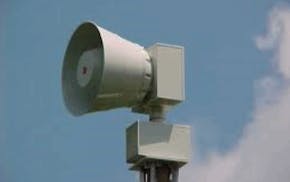With the Thanksgiving holiday last week, you may have missed that the National Highway Traffic Safety Administration on Wednesday came out with new voluntary guidelines that ask makers and developers of electronic devices, apps and smartphones to design their products, that when used by drivers, cut down on distraction.
Specifically, the guidelines ask that mobile and electronic devices come with features such as pairing, in which a portable device is linked to a vehicle's infotainment system, as well as "Driver Mode," which features a simplified user interface. The guidelines also call for some cell phone functions to be disabled when paired with a vehicle. They include playing most video, text entry for messaging or internet browsing, and displaying social media content.
"Far too many are put at risk by drivers who are distracted by their cellphones," said U.S. Transportation Secretary Anthony Foxx. in a statement."These commonsense guidelines, grounded in the best research available, will help designers of mobile devices build products that cut down on distraction on the road."
The subject of distracted driving is getting increased attention after U.S. highway deaths spiked to 35,092 last year, the highest one-year increase since 1966, the U.S. Department of Transportation said. The department attributed the 7.2 percent increase in highway deaths to more driving, drunken driving, speeding and distraction from phones and other devices.
The guidelines come as data shows that about 10 percent of fatal crashes in 2015 involved at least one distracted driver. Those crashes led to 3,477 deaths, NHTSA said.
Additionally, distracted driving was a factor in 16 percent of the more than 5.6 million crashes in 2014, the latest year for which such data is available, the agency said. And of the 967,000 distraction-related crashes that year, 7 percent involved the use of a cell phone and led to 33,000 injuries.
By incorporating pairing and "Driver Mode" features, NHTSA says they will reduce the potential for unsafe driver distraction by limiting the time a driver's eyes are off the road, while at the same time preserving the full functionality of these devices when they are used at other times.
"NHTSA has long encouraged drivers to put down their phones and other devices, and just drive," NHTSA Administrator Mark Rosekind said in a statement. "With driver distraction one of the factors behind the rise of traffic fatalities, we are committed to working with the industry to ensure that mobile devices are designed to keep drivers' eyes where they belong — on the road."
Sen. Amy Klobuchar, D-Minn., who has been a crusader to end the practice of distracted driving, cheered the guidelines.
"I have met with families across Minnesota that have lost loved ones when a driver took his or her eyes off the road, and their heartbreaking stories remind us that stopping distracted driving is a matter of life and death," she said. "Smartphone manufacturers and app developers have a role to play in addressing the spike in distracted driving, and I hope the proposed voluntary guidelines will help move this conversation forward and reninforce the message that no text, tweet or snap is worth dying for."
Not everybody appears to be ready to sign on. Gary Shapiro, president and CEO, Consumer Technology Association says NHTSA has overstepped its authority in trying to regulate electronic devices.
"NHTSA doesn't have the authority to dictate the design of smartphone apps and other devices used in cars – its legal jurisdiction begins and ends with motor vehicle equipment," he said. "NHTSA's approach to distracted driving is disturbing. Rather than focus on devices which could reduce drunk driving, they have chosen to exceed their actual authority and regulate almost every portable device."
He said the issue should be handled through state legislation that bans texting while driving and places strict limits on the use of electronics by novice drivers.

Lakewood Cemetery in Minneapolis opens new Welcome Center
![The Minneapolis City skyline including City Hall seen from the back of the U.S. District Court. ] GLEN STUBBE • glen.stubbe@startribune.com Mon](https://arc.stimg.co/startribunemedia/J6LWXC46FXN45KTZZGKPP4WGX4.jpg?h=91&w=145&fit=crop&bg=999&crop=faces)
Lawsuit asks judge to appoint special master to oversee city of Minneapolis violence prevention office

FBI agent reveals how the agency's massive fraud investigation began in Feeding Our Future trial

U of M's interim president meets with pro-Palestinian protest organizers

